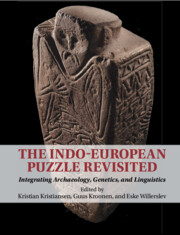Book contents
- The Indo-European Puzzle Revisited
- The Indo-European Puzzle Revisited
- Copyright page
- Contents
- Figures
- Tables
- Contributors
- Preface
- Introduction
- Part I Early Indo-European and the Origin of Pastoralism
- 2 The Yamnaya Culture and the Invention of Nomadic Pastoralism in the Eurasian Steppes
- 3 Yamnaya Pastoralists in the Eurasian Desert Steppe Zone: New Perspectives on Mobility
- 4 Proto-Indo-Anatolian, the “Anatolian Split” and the “Anatolian Trek”: A Comparative Linguistic Perspective
- Part II Migratory Processes and Linguistic Dispersals between Yamnaya and the Corded Ware
- Part III The Cultural and Linguistic Significance of Bell Beakers along the Atlantic Fringe
- Part IV The Bronze Age Chariot and Wool Horizons
- Part V Kinship Systems, Marriage, Fosterage, Free, and Unfree
- Concluding Reflections
- Index
- References
4 - Proto-Indo-Anatolian, the “Anatolian Split” and the “Anatolian Trek”: A Comparative Linguistic Perspective
from Part I - Early Indo-European and the Origin of Pastoralism
Published online by Cambridge University Press: 29 April 2023
- The Indo-European Puzzle Revisited
- The Indo-European Puzzle Revisited
- Copyright page
- Contents
- Figures
- Tables
- Contributors
- Preface
- Introduction
- Part I Early Indo-European and the Origin of Pastoralism
- 2 The Yamnaya Culture and the Invention of Nomadic Pastoralism in the Eurasian Steppes
- 3 Yamnaya Pastoralists in the Eurasian Desert Steppe Zone: New Perspectives on Mobility
- 4 Proto-Indo-Anatolian, the “Anatolian Split” and the “Anatolian Trek”: A Comparative Linguistic Perspective
- Part II Migratory Processes and Linguistic Dispersals between Yamnaya and the Corded Ware
- Part III The Cultural and Linguistic Significance of Bell Beakers along the Atlantic Fringe
- Part IV The Bronze Age Chariot and Wool Horizons
- Part V Kinship Systems, Marriage, Fosterage, Free, and Unfree
- Concluding Reflections
- Index
- References
Summary
Since the so-called “Ancient DNA Revolution” of the past decade, which has yielded many new insights into the genetic prehistory of Europe and large parts of Asia, it can no longer be doubted that the Indo-European languages spoken in Europe and Central and South Asia were brought there from the late fourth millennium BCE onward by population groups from the Pontic–Caspian steppes who had belonged to the archaeologically defined Yamnaya culture.1 We may therefore assume that the population groups bearing the Yamnaya culture can practically be equated with the speakers of Proto-Indo-European, the reconstructed ancestor of the Indo-European languages of Europe and Asia, and that the spread of the Indo-European language family is a direct consequence of these migrations of Yamnaya individuals into Europe and Asia.
- Type
- Chapter
- Information
- The Indo-European Puzzle RevisitedIntegrating Archaeology, Genetics, and Linguistics, pp. 42 - 60Publisher: Cambridge University PressPrint publication year: 2023



